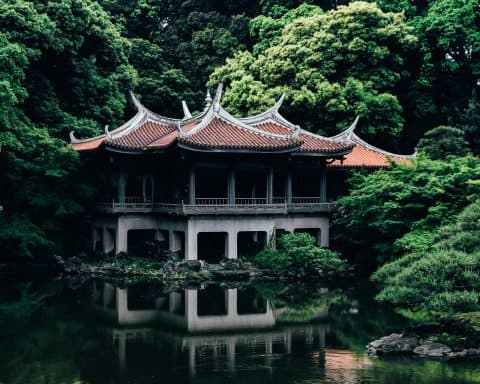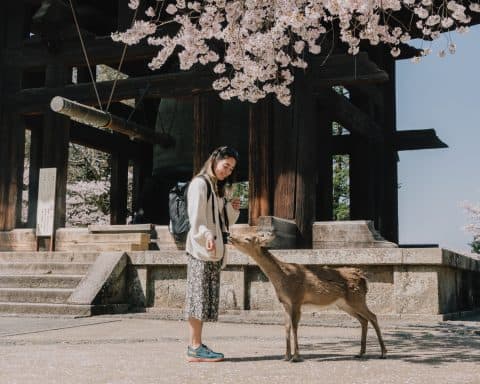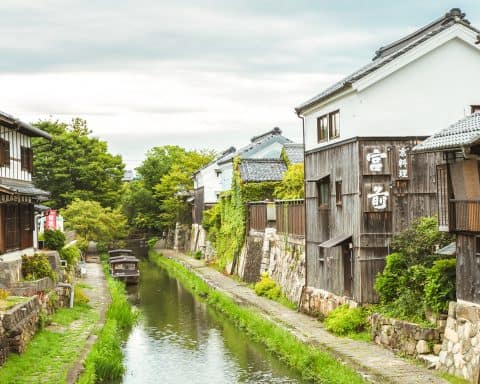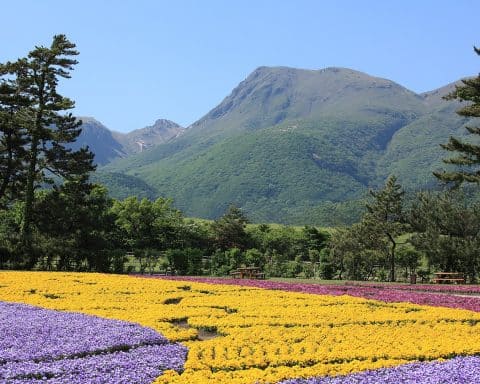If you’ve decided to take a trip to Japan for your annual holiday, every single one of those days needs to be spent well. That doesn’t mean never sleeping or always being on the go, but it does mean that every destination you visit needs to earn its place on your itinerary. We’ve already asked ‘Is Sapporo Worth Visiting?” So what’s next?
One of those places that most people come across in their initial research is Hakone. Hakone is a beautiful town that sits in the foothills of Mount Fuji and is only a stone’s throw from the capital of Tokyo. However, with so many places to visit, many people wonder whether it’s worth taking a trip outside the capital to visit.
Hakone is absolutely worth visiting if you’re staying in Tokyo. It doesn’t matter whether your holiday is a week or a month-long, Hakone needs to take its rightful place on your itinerary. If you’re considering exploring Japan’s fantastic onsen scene, there really is no better place.
While it might be a beautiful place to visit, that isn’t the only reason you should visit Hakone. Let’s take a deeper look at why Hakone is such a special place, and why you need to go there!
Hot Tip: If you’re in need of a multi-currency bank account, or simply want a card that you can use in Japan without incurring those pesky hidden fees, Wise is the bank to choose. They’re super quick to set up, and a great alternative to converting physical cash when you don’t need to. I’ve used them for a long time and they’re ideal for travelers!
Where Is Hakone?
Ok, we can’t start talking about the magical and mysterious Hakone if we don’t even know where it is!
So, let’s briefly take a look at a map:
You might have to move it a little bit to see its position in relation to Tokyo, but that tiny area outlined in red is the town of Hakone. We’ll take a look at the best ways to get there a bit later on in the article, but for now, hopefully, you can see just how close it is to Tokyo, and also to Mount Fuji. It’s not a big place by any means, but that makes for a more intimate experience and allows you to see more of it even if you only have a single day here.
What Is Hakone Known For?
A lot of things that are worth talking about! However, we’ll start this list by talking about the thing that generally puts Hakone on the map, and that’s Onsen.
Onsen In Hakone

In case you’re unfamiliar, Japanese onsen are natural hot springs that can be found all over the country. Often, these hot springs can be found in hotels and bathhouses, but there’s also a vast selection open to the public, as well as a few completely natural ones.
These onsen form a big part of the wider Japanese culture and are an integral part of daily life for a lot of people who live here. As such, it’s extremely common for many tourists to want to add a traditional Japanese onsen experience to their bucket list.
Of course, you could find one in Tokyo, but if you’re looking for something slightly off the beaten track and perhaps in a more calm part of Japan, Hakone is your absolute best bet. I’ll talk more about visiting an onsen in Hakone a little later on in the article (I could probably write an entire article on it if I’m being honest) so keep reading if you’re interested.
Traditional Ryokans
What’s something that goes hand in hand with Onsen? That’s right, traditional Japanese Ryokans.
Like the onsen in Hakone, Traditional Ryokans can be visited at most places throughout Japan, but Hakone feels secluded, personal, intimate, and far more authentic than a lot of the other ones around the country.
For those of you who don’t know, a Ryokan is a traditional Japanese inn that often features onsen, tatami floors, and kimono and yukata-clad guests throughout. An absolutely perfect place to stay if you’re hoping to understand Japanese culture a little more, or just need a break from the big city.
The Tokaido Road
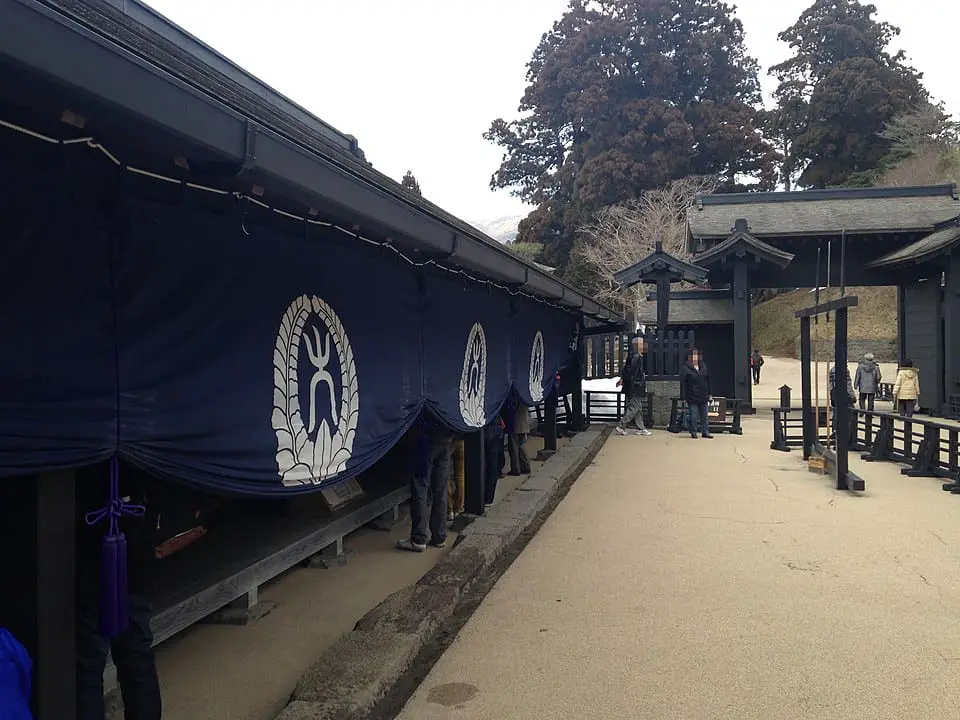
Hakone was once an extremely important checkpoint along the famous Tokaido road. Not only does that give it an incredible cultural and historical significance, but you can still walk the Tokaido trail and even visit the old checkpoint!
How To Get To Hakone
If you’re considering visiting Hakone, I’m going to assume the vast majority of you are in Tokyo. Check out Kyoto vs Hakone if you’re further down south! It’s a pretty good alternative!
Whether you fancy a quick Hakone day trip or want to spend a couple of days in the mountainous town, you need to know how to get there.
The Shinkansen
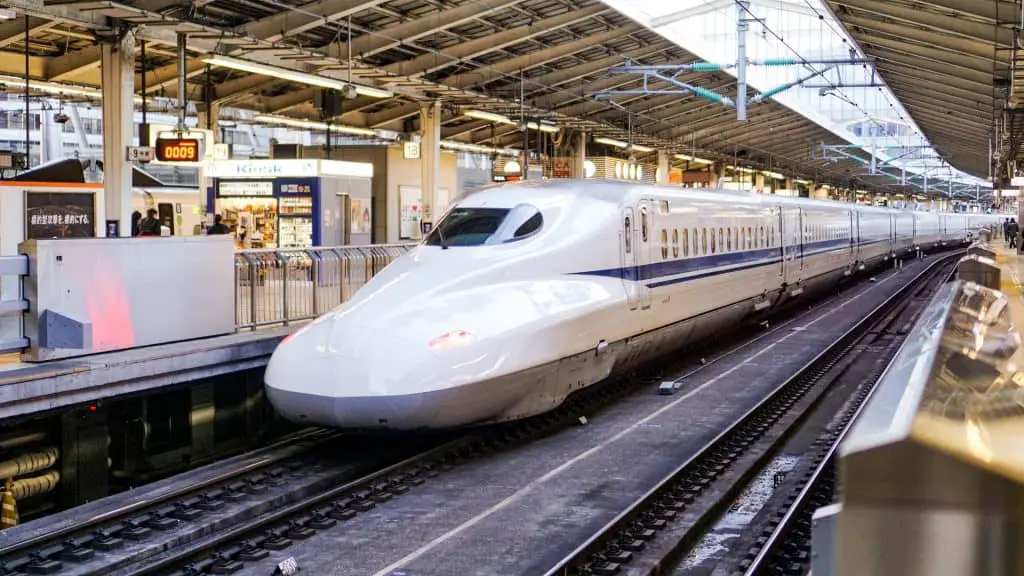
The first choice you have when traveling from Tokyo to Hakone is the Shinkansen. These are Japan’s most famous, premium, and fastest trains. The Tokaido-Sanyo Shinkansen will get you to Odawara Station in just 30 minutes from Tokyo Station. From there, it’s just a quick 12-minute, 7-stop train ride to Hakone-Yumoto Station.
Unfortunately, this premium (and ridiculously fast) train service does come with a heft price tag. You’re looking at around ¥4,300 (about $33) per person to get there. As you’ll see in a moment, that’s around double the price of what you need to pay if you aren’t in a rush.
The Romancecar (ロマンスカー)
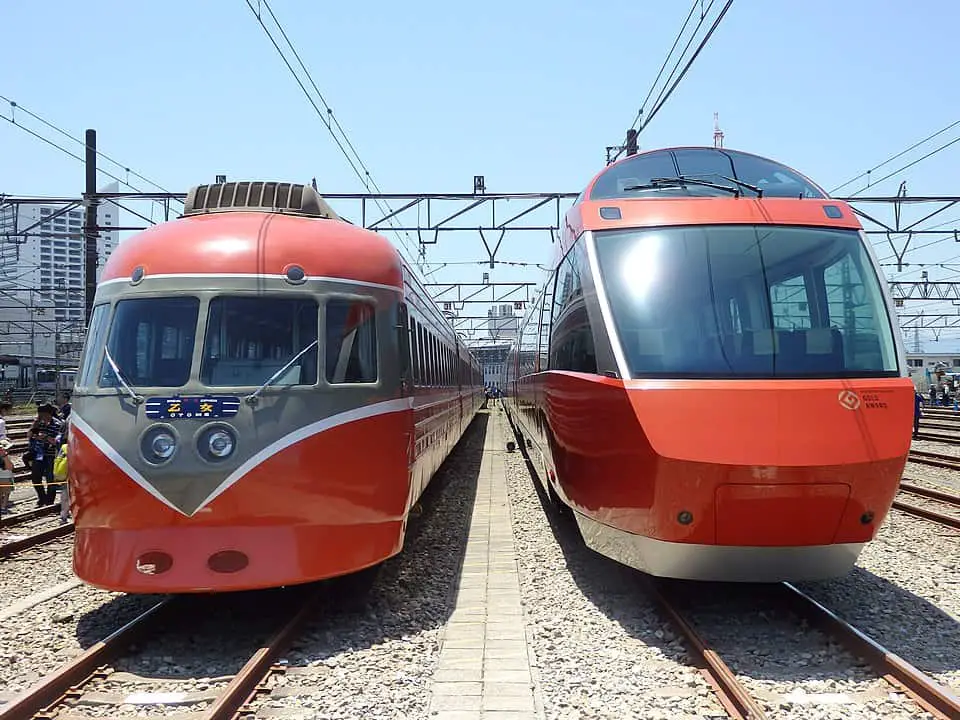
The second, and in my opinion best way to get to Hakone is on the Romancecar. This train leaves from Shinjuku Station once or twice an hour and arrives directly at Hakone-Yumoto Station meaning you don’t have to worry about changing trains at Odawara like the Shinkansen.
However, the Romancecar takes just under an hour and a half to reach its final destination as opposed to the Shinkansen only takes less than half. So if you’re in a rush (unsure why you would be if you’ve planned things well enough) then you might need the speed of the Shinkansen, but if not, the romance car is the best way to go.
One thing that’s important to note, the romance car requires booking in advance as all of the seats need to be reserved. That means if you chose to go to Hakone, it needs to be planned at least a few days in advance. The sooner you book it, the more likely you are to get your chosen class (more on that in a minute.
Tickets cost about ¥2,330 per person from Shinjuku to Hakone-Yumoto, that’s just under $20. So although you’ll get there a little later, it’s a very relaxing and comfortable ride with some absolutely stunning views. Plus, you can just sit back and not worry about missing your stop as it’s the last one!
How to book your tickets
The easiest way to book your tickets is using the Odakyu electric railway website. You can book your tickets up to a month in advance and be absolutely sure you and your party will get the seats you want. You can also manage your booking directly, so if your plans change, it won’t take long to reshuffle your tickets.
If you don’t want to book your tickets online or you’ve ended up having more of a spontaneous trip, you’ve got a couple of options depending on how brave you’re feeling. The first way is by visiting the Odakyu Sightseeing Service Center at Shinjuku West Station. It’s a place specifically designed to help foreign visitors navigate around Shinjuku (and the services it offers, such as the romancecar), and is the perfect place to go if you need any help booking your tickets. If you’re interested in finding out more, here is the link.
The other way to book your romancecar tickets from Shinjuku to Hakone-Yumoto is by visiting a ticket machine at Shinjuku station. I could give you a ‘How to’ guide here, but the official Odakyu line website does a much better job of explaining it. Honestly, it’s actually a really simple process and isn’t nearly as daunting as you’d think it is. The only thing to remember here is that there are specific machines you’ll need to use in order to purchase your ticket, so make sure you’re at the right one. Take a look here for the official guide to purchasing tickets for the romance car from a ticket machine.
The Tozan Train
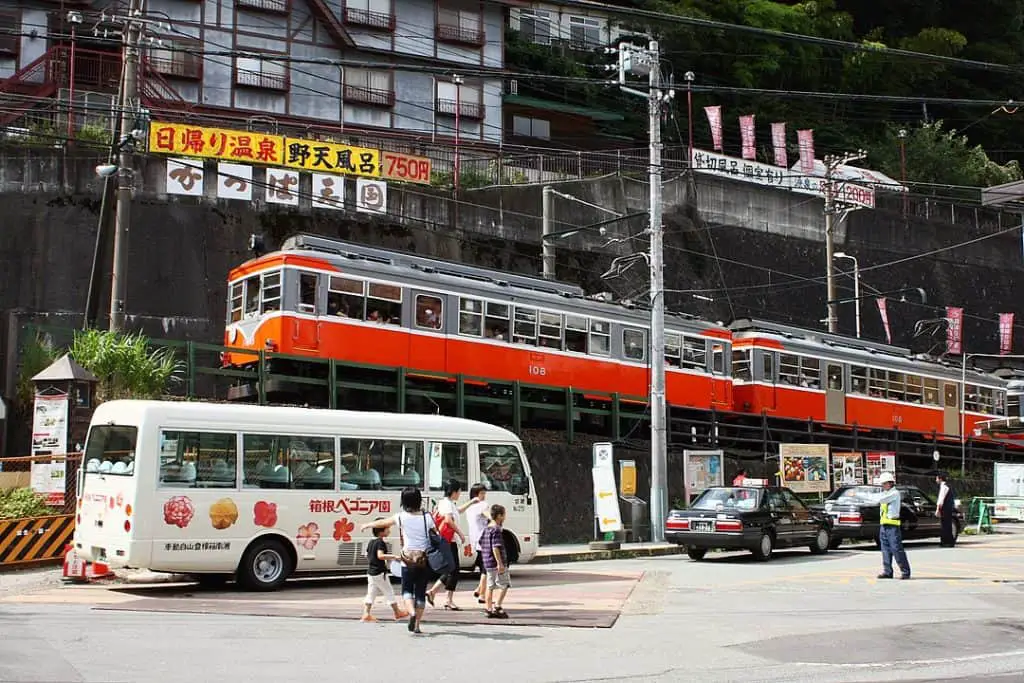
Depending on where you’re staying, and whichever way you’ve got to Hakone-Yumoto station, you’ll likely need to hop on the Tozan line train. As far as I’m concerned, this is a fantastic experience all by itself, but then again, I’m a bit of a nerd.
The Hakone Tozan Line is a mountain cable car, also operated by Odakyu, that transports people up and down the valley of Hakone. Not only is it extremely convenient, but like the Romancecar I definitely believe it’s something you have to do when visiting.
If you happen to be visiting in mid-June, you’ll be lucky enough to see hundreds of Hydrangea bloom along the side of the tracks. It’s because of this yearly occurrence that the Tozan railway is sometimes known as the ‘Hydrangea Railway’.
Where does the Tozan Railway take you?
Technically, the Tozan Railway starts from Odawara, but as I mentioned above, most people take the romancecar to Hakone-Yumoto and then get on the Railway to their final destination. From Hakone-Yumoto to Gora (That’s 6 stops), you’ll be sat on the Tozan train. It’s slow, cute, and zig-zags its way up the mountain.
If you need to go further up, you’ll have to switch to the Tozan Cable Car (Similar to the train, but able to handle inclines better) where it will take you all the way to Sounzan Station, the final stop on the track. That’s the stop you’ll need to get off at if you’re headed to the Hakone & Owakudani ropeway.
How Long Should You Spend In Hakone?
Knowing how long to spend in any part of Japan if it’s your first time is always going to be a struggle. If you have enough time and want to take your time exploring Hakone, I would suggest spending 1 night and 2 days in the town.
We already know how to create an incredible 2-day itinerary in Hiroshima, and Hakone has just as much to explore.
Depending on where you’re staying in Tokyo (and if you’re even staying in Tokyo), you could get up early on the first day, grab the quick hour and a half train into Hakone, sleepover, and get the train back in the late afternoon. You could easily spend more time there, but I would suggest this is enough if it’s your first holiday in Japan. There’s just too much else to see!
If however you’re extremely pushed for time but still want Hakone to be part of your itinerary, you only need to spend 1 day here. It might take a little more planning, but you could get up early in the morning and leave in the evening. Sure, you’ll probably be tired in the evening, but you’ll know all your time has been spent jam-packed with things to do!
Things To Do In Hakone
I’ve read a few things online that suggest there isn’t enough to do in Hakone to make it part of your itinerary, but that simply isn’t the case. While it’s true that other places do offer more “Activities” and things to do, you have to remind yourself why you’ve chosen to visit. The main reason you should be visiting Hakone is for the culture and natural beauty.
As such, you shouldn’t be looking for constant stimulus, but rather taking the time to enjoy your surroundings and savor that moment of peace before you likely head back to Tokyo. But of course, it’s still nice to include a few things in your trip, and it’s better to know about them beforehand so you can plan your time well, especially if you don’t have much of it here.
Hakone and Owakudani Ropeway
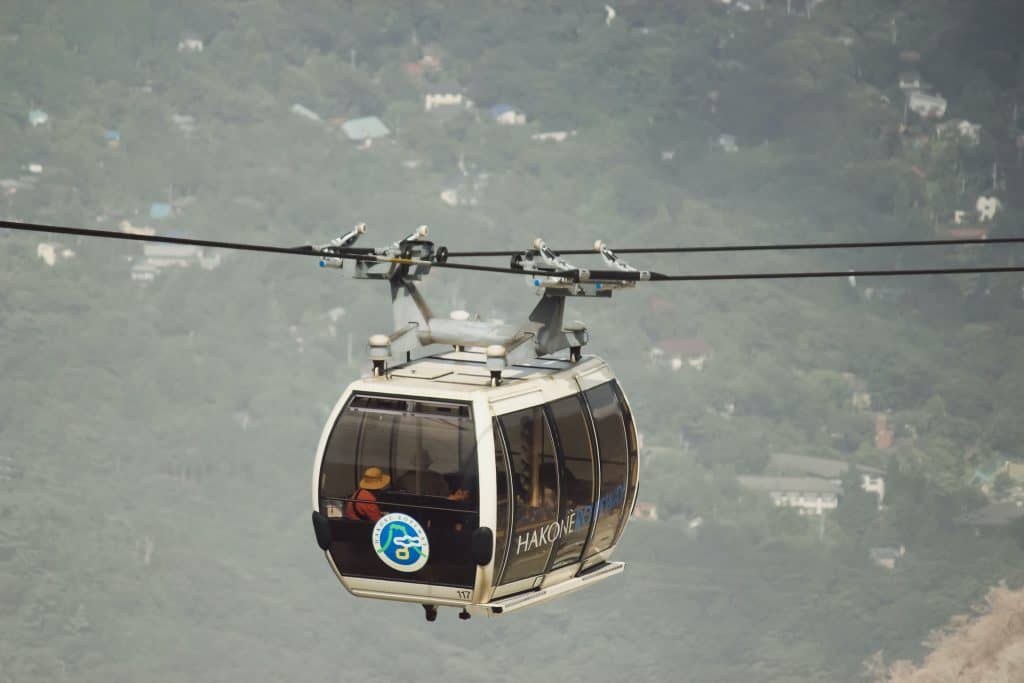
Let’s start this list off by talking a little more in-depth about the ropeway. As I’ve already said above, the ropeway can be found at the top of the Tozan Railway and is by far, the most popular tourist attraction in the whole of Hakone.
The cable car goes from Sounzan station, across Owakudani, and its final stop lies at the bottom of the valley at tōgendai station, just next to Lake Ashinoko. The entire journey takes about 30 minutes which makes it the world’s second longest cable car.
So you’re talking about a long ride across the valley where you can enjoy views of the hot springs in the Owakudani Valley, Mount Fuji, and Lake Ashinoko from up high. If the weather holds out, these could just be some of the most spectacular in the country.
The Pirate Ship
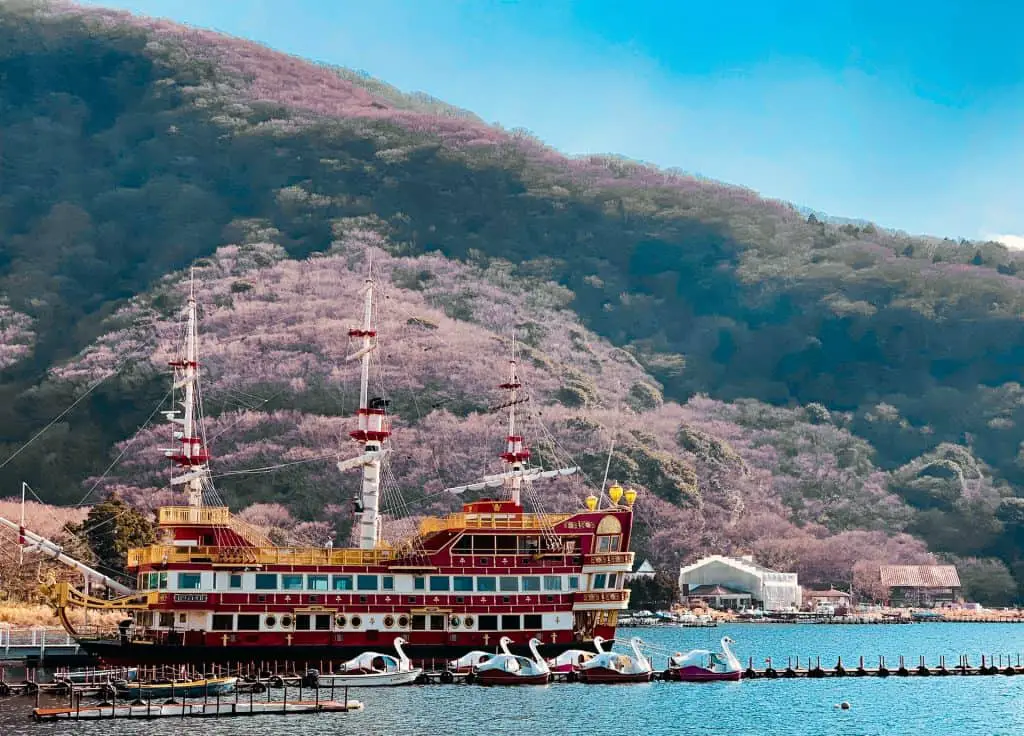
Once you arrive at the final cable car stop, you’ll be next to Lake Ashinoko and smack bang in the middle of Hakone. If you’ve done any amount of research before your trip, it’s likely you will have seen photos of this spot before.
You can go for a cruise on the lake in a pirate ship, visit a Giant Torri gate, walk around the lake, or simply enjoy some of the local traditional food on offer. It’s really a stunning place to visit if you have the time. I’ve been there a few times myself and enjoyed every last minute of it. Unfortunately, the weather was bad on all occasions, but I’d still recommend it regardless.
Onsen
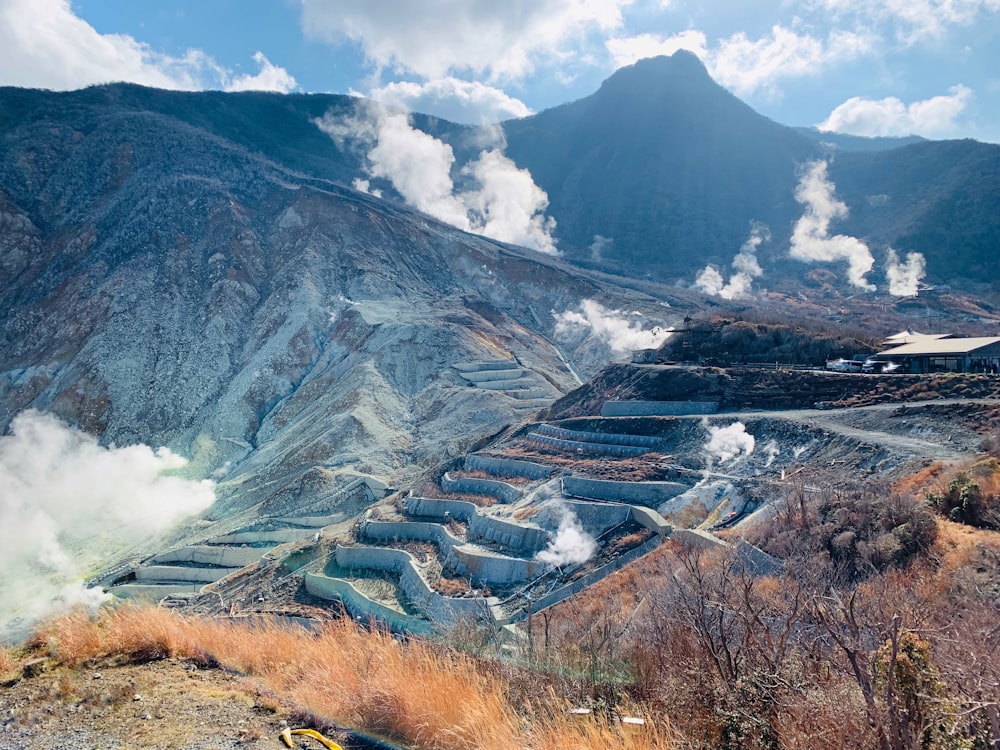
As possibly the biggest reason to visit Hakone, taking a dip in an onsen should be high on anyone’s bucket, no matter how long you’re staying.
The amount of unique and different onsen this place has is astonishing. I guarantee you’ll find something that takes your fancy, and if you don’t, you’ve got some pretty wacky taste!
Let’s take a moment to discuss two of the most interesting types of onsen available in Hakone. The first of which is a footbath.
Footbath onsen are pretty much exactly what you think they are. Visitors just have to take their shoes and socks off and can enjoy a moment of rest in their day. These are dotted all around Japan, and I’ve personally used some of them outside the smaller countryside train stations.
Been on a long train journey and need to relax a bit before continuing your day? Take a few moments to rest your feet and bathe them in the natural spring waters of an onsen foot bath.
I know of two that you can visit in Hakone, but there may be a lot more. The first footbath is located in the Okada Museum of Art.
Okada Museum of Art
It costs ¥2,800 (Just over $20) to get in, and the footbath is only part of the experience. You’ll also be able to visit Kaikatei (a traditional-style Japanese house turned into a restaurant), a museum filled with ancient Chinese, Korean, and Japanese art, and a stunning garden.
The footbath itself features 100% natural hot spring water and gives you the opportunity to buy a refreshing drink while you relax. It does cost ¥500 (Just under $4) if you’ve decided not to purchase a full museum ticket. I think it’s worth it to do the whole thing though if you’ve got time.
The Hakone Open-Air Museum
The other footbath is located in the Hakone Open-Air Museum. The open-air art museum is also extremely popular with tourists, so if that sounds like something you would enjoy then it could be a two-for-one situation!
The footbath is full of natural hot spring water, just like the art museum, though the space is slightly less intimate. However, it’s included in the price which is ¥1,600, so it’s almost definitely a better value than the art museum. So if you aren’t too bothered about art but you do want to try a footbath, this is the one to go for.
The second type of onsen is, well… Take a look below, because I really don’t know how to describe it!
Hakone Kowakien Yunessun
While this is still technically an onsen, I think it deserves its own spot on the list. Most of you who come to Hakone will be looking for an authentic onsen experience, and the Kowakien Yunessun is absolutely…not the place to find it.
So why is it on the list?
I know I’ve talked about how Hakone is a great place to find that traditional Japanese experience, but for some people, I think this place is reason enough to visit Hakone. Especially if you’re coming with a family.
Hakone Yunessun is famous worldwide because of its interesting and unusual take on the traditional Japanese onsen experience. With baths filled with wine, coffee, green tea, and an actual hot tub waterpark, it’s bound to be an experience you won’t forget.
Due to its potentially ‘Gimmicky’ nature, and many different facilities for children, you should expect it to be busy if you’re visiting at a popular time. According to Google, the least busy time to visit is on a Thursday, with most people spending on average 2-4.5 hours in the baths. Saturday is of course the busiest day, so try to avoid planning your trip on the weekends if you can help it.
Walk around and explore

I’m not really a fan of visiting a place and spending all my time in a museum, or indoors somewhere. It’s a personal thing, and I have nothing against people who want to spend their time that way, but it’s just not for me.
If you feel the same way, I’m happy to tell you that Hakone is a fantastic place for walking and exploring off the beaten track. K’s House does a fantastic job at presenting the best hiking trails in Hakone. As much as I’d love to keep you on my website, I can’t deny the ease and simplicity with which they’re explained here. Though, you will come back, won’t you?… 🙁
A lot of these hikes are around 1hr30 – 3hrs30, so it’s perfectly accessible for those who only want to stay for a single day.
In case you’d rather explore Hakone with a guide (never a bad idea), here’s a list of a few of the most popular tours in the area. I’m particularly partial to a hike, so that’s what I would choose!
Where To Stay In Hakone
Choosing a place to stay in Hakone will depend on what you want to get out of your trip, whether you have a car, and how long you’re staying. I’ve actually only stayed at one hotel when I visited Hakone, but I highly recommend it for a traditional and authentic break from Tokyo.
Granted, we did have a car but the hotel itself was actually really close to a station. Despite this fact, I felt like we were literally in the middle of nowhere even though we were sort of in the main bit if that makes sense. Anyway, the point is that the Shiunso Ryokan in Hakone was incredible, to say the least.
Instead of providing you with exact places to stay, I want to go over the types of options you’ll have and then you can decide what sort of accommodation you want and book it in the location that best suits your itinerary.
Hotels & Ryokan
I would normally make a separate category for hotels and Ryokan, but in Hakone, they seem to be one and the same. 99% of hotels you visit will have Onsen and also offer a traditional, authentic Japanese experience. Many hotels will offer both traditional Japanese rooms with tatami floors and also ones with western beds. I know what I would prefer, but the choice is of course completely up to you.
The main difference between the two offerings is that when you book a Ryokan, you’re basically booking an entire experience. I won’t go into too much detail about the difference between a ryokan and a hotel in this article, but simply put, hotels may offer Japanese-style rooms, and ryokans offer an entire experience.
You’ll likely find staff popping in and out of your room to make up your beds, present you with your traditional Japanese dinner, and give you an all-round incredible experience. Breakfast is usually taken in a big dining hall called an oshokuji-dokoro, a great place to mix with the other guests at the ryokan, should you desire to.
As prices frequently change and new hotels pop up all the time, I would advise you to look at somewhere like booking.com for the best hotels and ryokans available for your budget. There were over 193 options when I last typed in ‘Hakone’ so you won’t be short on places to stay.
Airbnb
Airbnb is the (relatively) new kid on the block, at least as far as Japanese hospitality is concerned. However, while you may not get the same kind of service you would expect in a Ryokan, you may get some exceptional amenities for a much cheaper price. If you’re staying with a family, this one’s a no-brainer.
I’ve come across a vast selection of Airbnbs that have their own onsen and spectacular views of the country. I’ve even written an entire article about my favorite ones in Japan here.
So, is Hakone worth visiting?
In my opinion, whether you’ve only got a single day or maybe more, Hakone is a must-visit destination at least once on your visit to Japan. What makes it so desirable is the incredible amount of onsen hotels, the ease of an authentic experience, and the extremely close proximity to Tokyo.
Sure, there are other destinations that do similar things, but planning to visit them if you’re staying near Tokyo is likely to be a lot harder than a single train trip just over an hour away.
Looking for another destination near Tokyo? Here’s a comparison I did with Hakone vs Nikko. Both are fantastic areas to see just a couple of hours from Tokyo, but which one suits your itinerary best?




